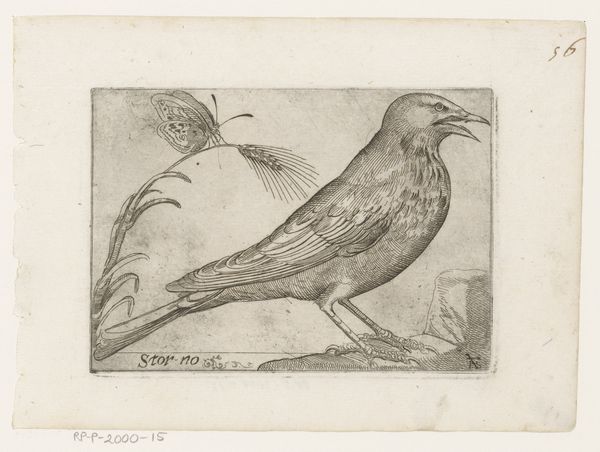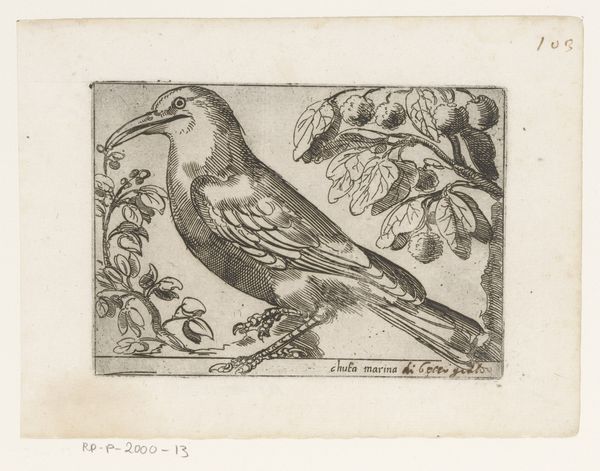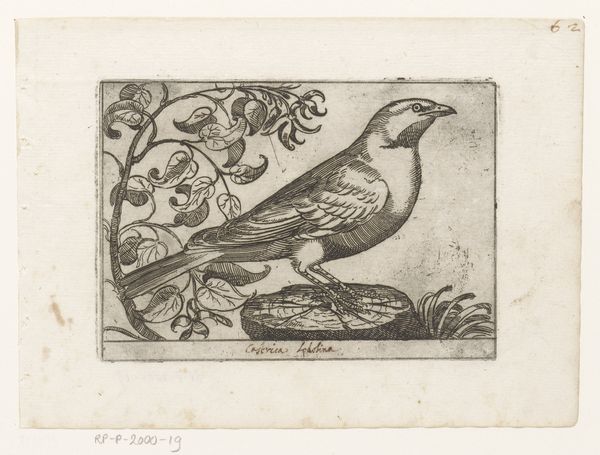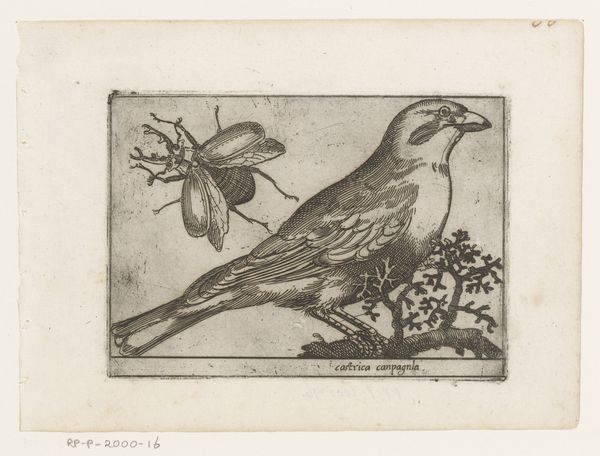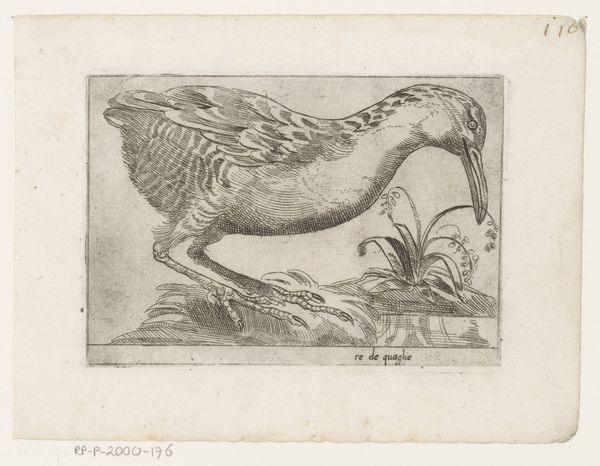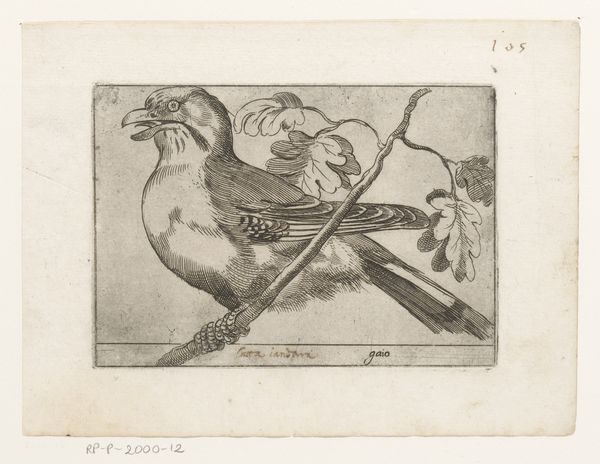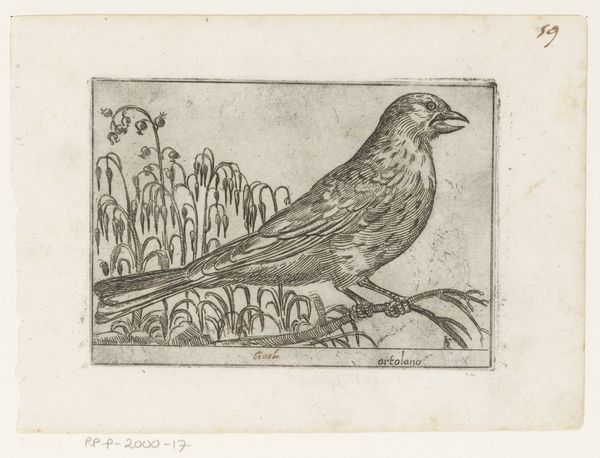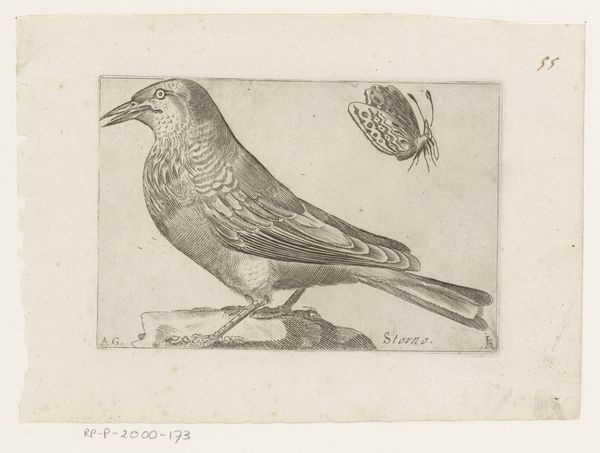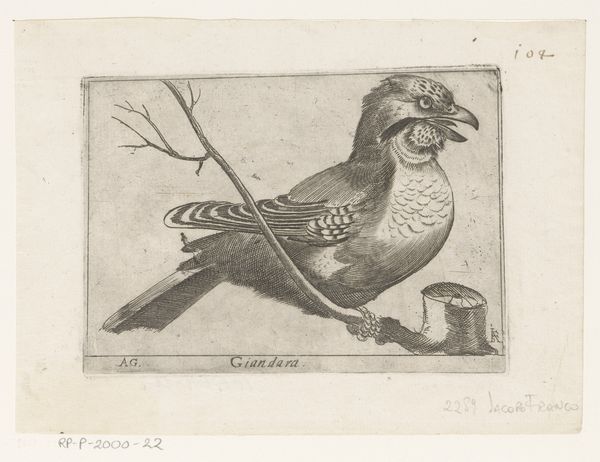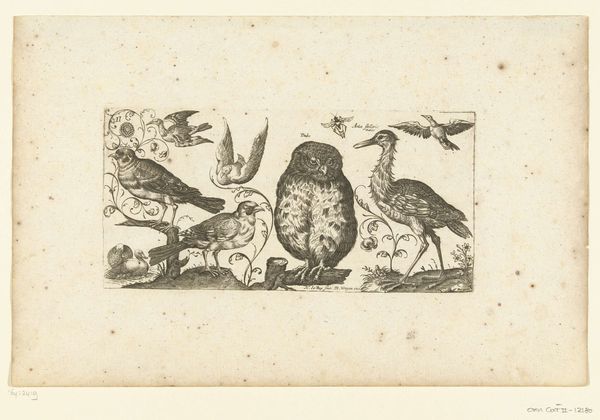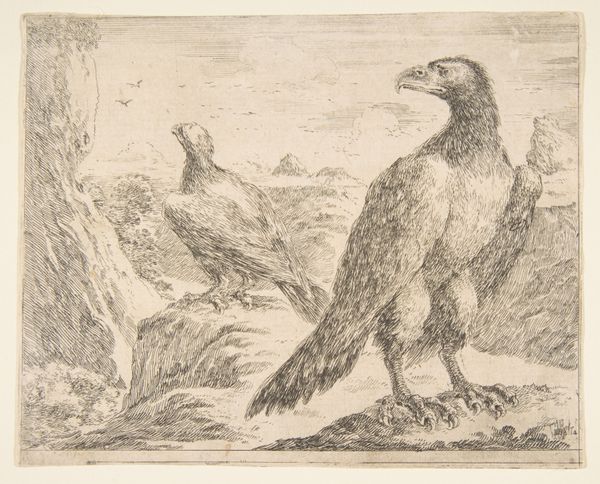
print, engraving
# print
#
11_renaissance
#
history-painting
#
northern-renaissance
#
engraving
Dimensions: height 92 mm, width 137 mm
Copyright: Rijks Museum: Open Domain
Curator: This print, entitled "Zwarte kraai," which translates to "Black Crow," was created around 1580-1590. It's an engraving, demonstrating the exquisite detail possible even without color. The artist is Jacques de Fornazeris. Editor: My initial feeling? Ominous. Stark, like a charcoal drawing discovered in a forgotten attic. There’s something deeply unsettling about the composition. Curator: It's a piece steeped in symbolism. The crow itself, historically, carries so much cultural baggage. It’s a fascinating study of Northern Renaissance sensibilities. We see here the bird of ill-omen paired with, yes, a skeletal form...likely an equine skull, wouldn’t you say? There are suggestions, too, of berries twining around the skull. Death and perhaps…a mocking life cycle? Editor: Precisely. The crow, perched so confidently, is not merely a bird but a symbol of something far more complex. Think of the period – the Renaissance grappling with plagues, social upheavals... this image speaks volumes about confronting mortality, the fleeting nature of earthly existence, a confrontation with ecological crisis! Curator: Absolutely. You could argue it is social commentary, if perhaps more indirectly. Crows in folklore are scavengers. So we might interpret this image as a critical assessment of, let's say, individuals exploiting or feeding off misfortune and, further, consider who those 'skeletal remains' were during this fraught historical period. A noble steed, maybe, ravaged by war? Editor: And that composition! The crow is positioned so prominently, almost as if it's observing us, the viewers, implicating us in the very scene it presides over. The detailed rendering of its feathers contrasts sharply with the simplified, almost crude depiction of the skull. This stark difference makes one reflect on beauty alongside decay. There is something deeply unsettling about being observed so keenly, by what is considered, generally, an 'ugly' subject, like a crow. It causes a lot of self-assessment! Curator: Right. A true Northern Renaissance spirit then, challenging accepted canons, prompting deeper reflection on societal fault lines, through animal forms… something both unsettling and profound. The fact that we're *still* drawn to it speaks volumes, no pun intended! Editor: Yes. Ultimately, the piece reminds me that grappling with difficult realities and deconstructing hegemonic thought structures may begin with honestly confronting these bleak, challenging images, not running away from them. Thank you, Monsieur de Fornazeris.
Comments
No comments
Be the first to comment and join the conversation on the ultimate creative platform.
